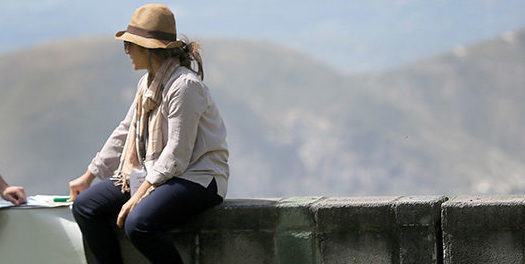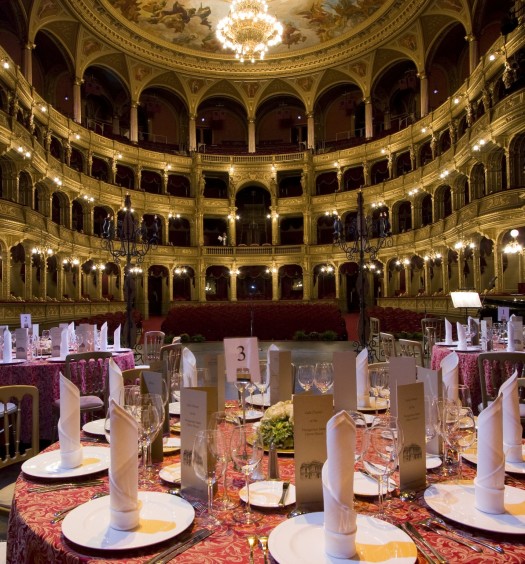The future is bright
The next 12 months will see a marked increase in meetings and events activity across Europe, according to one of the world’s biggest M&E companies. In November, American Express Meetings & Events published its global meetings forecast for 2016. The findings make positive reading for the entire supply chain. As most European economies strengthen, corporate meetings spend and delegate numbers are both predicted to enjoy modest growth. Survey respondents were quizzed on their plans for the year, from sales and marketing, to training, internal and executive team meetings, products launches, conferences and incentives. While all categories were predicted to see a rise, training and internal meetings were forecast to grow fastest.
The report found that budget is still the key consideration when it comes to choosing a meeting location. Access to airports and proximity of training facilities will also have a bearing on the selection of overseas destinations. But overall, the M&E sector is shaping up for a busy year. Is there a more appropriate time, therefore, to re-evaluate the way meetings are designed and conducted? In these austere times, companies are obliged to make sure time and money is spent wisely. With properly designed programmes, there are huge savings and productivity gains to be made in the meetings space.
Finding focus
The art of meetings is often misunderstood. Like newspapers, phones, web sites and brochures, is it a medium of communication that will only work if used properly. It could be three people in a small room in an office block; it may be an educational session for 500 members of staff in a hotel ballroom. Size does not matter. The principle remains the same: content and design must be tailored to the audience and the objectives of the meeting owner if it is to be a success. Preparation is fundamental. This may seem obvious, but many meetings are organised out of habit. Others are arranged by people who mainly focus on the logistics and operational issues, but perhaps without really knowing why. Many have good reason to bring people together, but don’t properly articulate what is it the actually want to achieve. The main challenge is that most meeting owners and arrangers formulate vague objectives. Moreover, they are not aware of the alternative ways to conduct meetings, and so use default formats and processes. There are a myriad of examples, but we can scratch the surface with one: sitting delegates in theatre style rows in a dark room will not work if a meeting is supposed to be interactive. Again, this may seem like common sense, but it happens in a surprising number of cases.
One of the biggest challenges facing any meeting is keeping delegates engaged. Attention spans are not as long as they used to be¾particularly among the Millennial generation¾and it’s all too easy for people to become engrossed in smartphones and tablets when they should be paying attention to speakers and presentations. But who can blame them if the content is boring or irrelevant? This is why preparation is so important. Failure to hit the right note with participants can demotivate staff and waste company money. The format, the experience and tone must, therefore, support the content and the overall aim of the meetings.
Doing your homework
To begin, the meeting owner must be clear about his or her own objectives in order to formulate a good programme. Then, along with the meetings designer, time must be taken to understand the profile of the delegates or audience. If neither of these steps are taken the meeting is destined to fail. Perform an analysis of the delegate profile and be sure they will get what they need in an engaging manner.
There are a number of meetings characteristics to take into account. Physical presence, for example, is very important. It is not a conference call. People are actually in a room and are together. How they feel and move is important. By definition, the meeting is outside of what one might refer to as the real world. A meeting is almost a suspension of time where ideas are discussed and developed with much more freedom than in the real world. Then, the outcomes need to be implemented back in the real world. The meeting owner, as previously mentioned, may have a fair idea about the direction in which they want the meeting to be taken. But if the objectives are not articulated properly the meeting design will almost certainly not facilitate the desired outcome. It helps, in almost all instances, for the owner to physically map out (on paper) the path the content should follow. All of these are building blocks that create the foundation of a successful meeting. Without each one of them, a project will likely fail.
Storytelling
The meeting venue is important. So, too, is the transportation used to get delegates there in the first place. Good food and drink adds to the experience. But these aspects are all peripheral to the content. If there is no content, there is no meeting. In theory, a meeting could be conducted without any of the peripherals. Getting those content objectives right is not easy; one can just say the aim is to provide a platform for networking or a space for the exchange of ideas. It has to be more specific: if, for example, the meeting owner wants every delegate to have at least 10 conversations that will lead to profitable follow up meetings. Then the designer has something with which to work. If the aim is to get each participant to say at least one sentence to everyone else in the room, it requires a specific type of interaction. That level of detail in formulating the objectives is required in order to tailor the meeting design.
Delivery of the content will make or break the meeting. Tell true and authentic stories. Make the content sticky by connecting with human instincts such as love, lust, fear and pleasure. Connect with people’s personal lives; delegates will react best to content to which they can relate. It is the key to inspiration. It is also the most effective way to generate interaction. Or, perhaps, even create conflict. Could there be a moral choice to be made at the end of a discussion? People in the room will have stories, opinions and experiences to share. This should be leveraged for the benefit of the meeting.
Measuring success and looking ahead
There are qualitative and quantitative outcomes to every meeting. The qualitative outcomes should be measurable to determine the meeting’s ROI. The quantitative requires evaluation based on subjective criteria, but will provide key indicators surrounding the effectiveness of each project. But be sure someone owns the meeting’s outcomes. There must be accountability surrounding the results and takeaways from the meeting.
The world of meetings and event is fast evolving. More is understood about human behaviour and how it can be influenced than ever before. Successful meetings can bring significant value to business, whether it’s savings, increased productivity, people motivation or business development. But in order to maximise the opportunities, meetings owners and arrangers need to start thinking in new ways. Inertia should not hold back the progress of meetings design.
Connections Meetings’ inaugural event takes place in Lisbon and the Algarve on December 9 – 11, 2016. This report was based on interviews with and the writing of Mike Van Der Vijver, the founder of MindMeeting. He has designed the content and format for Connections’ Meetings and will moderate the event in Portugal..




